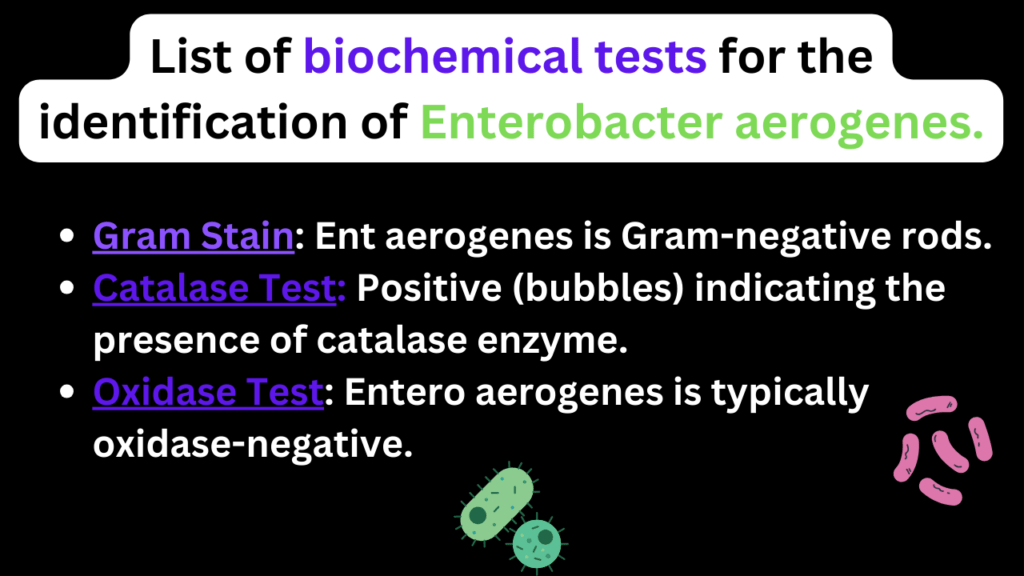Enterobacter aerogenes is a Gram-negative, facultative anaerobic bacterium belonging to the Enterobacteriaceae family.
It is widely distributed in various environments. This bacterium has garnered significant attention in medical, industrial, and research settings due to its diverse characteristics and implications.

It isolated in the early 20th century, Enterobacter aerogenes was initially identified as a part of the normal flora in the human gastrointestinal tract. It is associated with hospital-acquired infections, pose a particular threat in healthcare settings.
It has been implicated in UTI (urinary tract infections), respiratory infections, and wound infections.
Here’s the list of Enterobacter aerogenes biochemical tests with their results.
- Gram Stain: Ent aerogenes is Gram-negative rods.
- Catalase Test: Positive (bubbles) indicating the presence of catalase enzyme.
- Oxidase Test: Entero aerogenes is typically oxidase-negative.
- Citrate Utilization Test: It shows (blue color) indicating the ability to utilize citrate.
- Indole Production: It shows a Negative result for indole production.
- Methyl Red Test: Enterobacter aerogenes usually do not produce a stable acid end product.
- Voges-Proskauer Test: It typically gives a negative result for VP.
- Urease Test: It does not produce urease.
- Triple Sugar Iron (TSI) Agar: Fermentation of glucose (yellow butt), no gas production, and no hydrogen sulfide production (no blackening).
- Motility Test: Enterobacter aerogenes is motile.
- Lysine Decarboxylase Test: Positive for lysine decarboxylation.
- Lysine Decarboxylase Test: Positive for lysine decarboxylation.